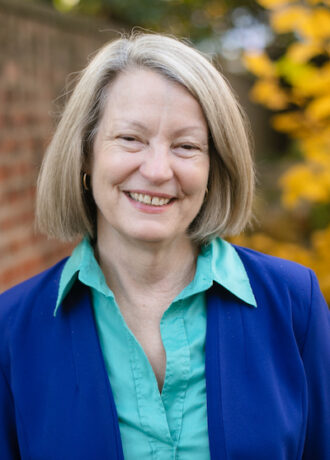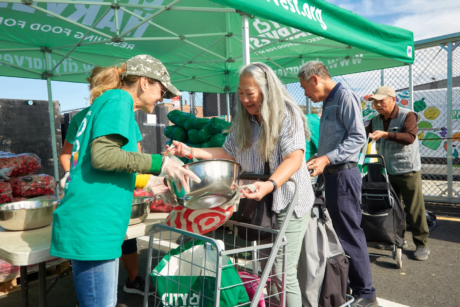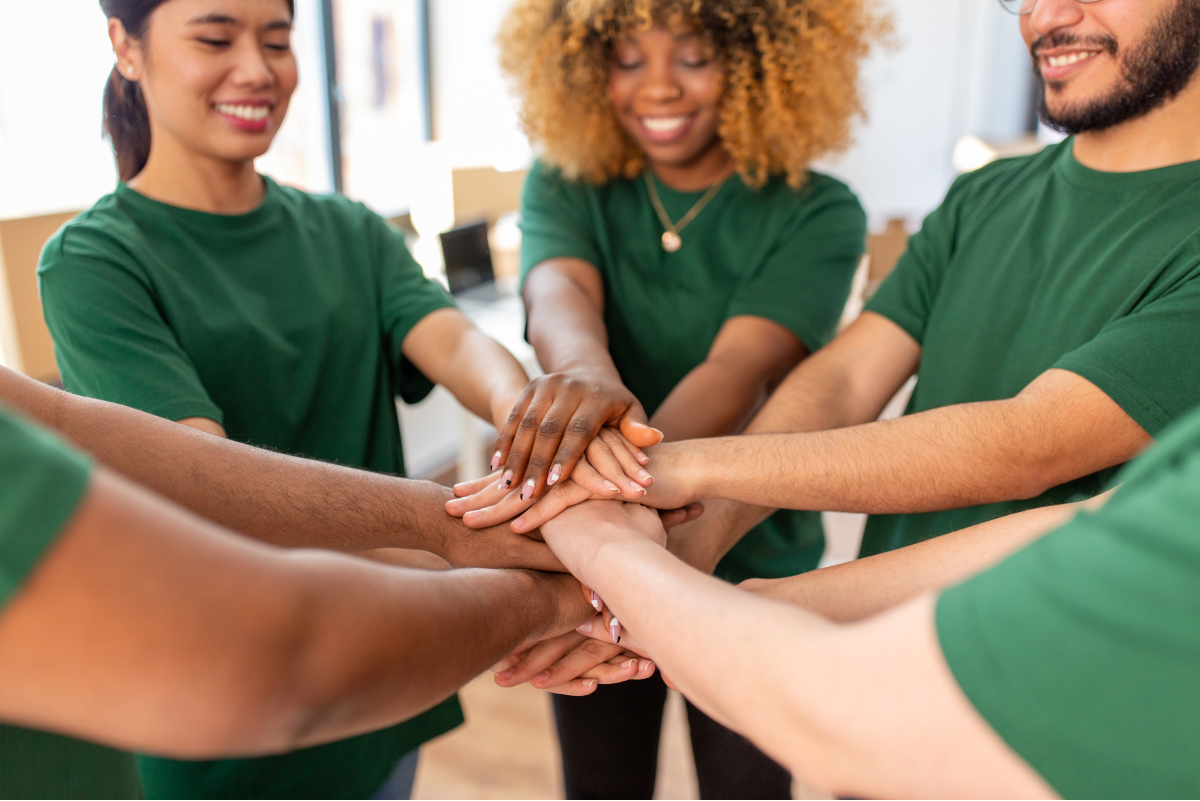An Important New Report on American Generosity
An Important New Report on American Generosity
By Elizabeth Lynn, Special Projects Director, Lake Institute
 Every day across the United States, millions of people — young, old, or just ‘gently aged’ like me — do something generous. They might be giving their Time or Treasure to support a person or cause. They might be sharing some Talent they have with a group or organization. They might be stepping forward and offering Testimony to encourage greater compassion and justice in our common life. They might be actively sharing their Ties—their relationships or connections—to help a cause or a friend. In all these ways and more, everyday Americans express generosity, embodying the helpful definition coined by sociologist Christian Smith: they give good things to others freely and abundantly.
Every day across the United States, millions of people — young, old, or just ‘gently aged’ like me — do something generous. They might be giving their Time or Treasure to support a person or cause. They might be sharing some Talent they have with a group or organization. They might be stepping forward and offering Testimony to encourage greater compassion and justice in our common life. They might be actively sharing their Ties—their relationships or connections—to help a cause or a friend. In all these ways and more, everyday Americans express generosity, embodying the helpful definition coined by sociologist Christian Smith: they give good things to others freely and abundantly.
The Future of Generosity
Generosity is a wellspring of well-being for our communities and ourselves.
Donors and volunteers make our nation’s many caring and serving organizations possible, along with all the much-needed services these organizations provide. Just try to imagine American society without that intricate web of care and service threading our communities.
Generosity benefits the giver alongside the receiver. Maya Angelou once wrote that giving liberates the soul of the giver — and contemporary science confirms that she was abundantly right!
Yet, the ways we enact generosity can change, and in recent years some of the changes have raised alarm. Research from many sources, including the Lilly Family School of Philanthropy, has shown that while many Americans still give and serve, participation in these two crucial kinds of generosity has been declining. Recent volunteer rates showed their first significant decline in 2006, down to approximately 27% through the years of the Great Recession and then bottoming out at a fifteen-year low under 25% percent in 2015. And, in 2018, the percentage of households that give to charity dropped below 50 percent for the first time.
Concerned about these noticeable declines in giving and serving, leaders from across the charitable sector came together in 2021 to create the Generosity Commission, a nonpartisan group committed to exploring, protecting, and promoting the future of American generosity. The Commission supported research and organized working groups to focus on policy and communications as well. Interestingly, it also created a Task Force on Faith & Giving, in the recognition that the interplay between religion and generosity may be especially important to understand. Lake Institute’s director David P. King co-chaired the Faith & Giving Task Force with Kerry Robinson, now of Catholic Charities, and together they convened a diverse, insightful group of scholars and leaders. I was so honored to be part of the group and to learn from its conversation and the Generosity Commission itself over the next several years.
Expanding the Conversation
Now the time has come when we can all learn from what the Generosity Commission has done — and begin to expand this crucial conversation about the future of American generosity into our own networks.
The Generosity Commission just published an important report, Everyday Actions, Extraordinary Potential: The Power of Giving and Volunteering. The report includes a shorter landscape analysis by Urban Institute Senior Fellow Ben Soskis, The Shifting Landscape of American Generosity, which you can download to share in your own community and work circles—a great place to dig in and discuss. And the Commission has also released this short video that you can use to spark the conversation.
Taking Action
But perhaps most importantly, the Commission report puts forward a set of recommendations for taking action to protect and promote generosity as a core value of American life. Consider this:
- How can fundraisers…funders…business leaders…better promote giving and volunteering?
- How can we inspire generosity in our own contexts and in our shared culture?
- What research is needed to better understand and measure diverse forms of generosity?
- What policies at the local, state, and federal levels can encourage giving and volunteering going forward?
Check out Everyday Actions, Extraordinary Potential: The Power of Giving and Volunteering to find out how we can work on all these levels to foster generosity and co-create a caring, serving society.
And stay tuned to Insights, too. In a forthcoming issue, David King will dive into the crucial role that religious organizations and leaders can play in moving this essential conversation about the future of American generosity forward.
Expanded Perspective: America’s Giving Crisis – and the Plan to Fix It
By Sara Herschander for The Chronicle of Philanthropy

Local food banks with fewer volunteers. Community fundraisers falling short. Across the country, a sense that neighbors don’t help neighbors like they used to anymore.
It’s a hunch corroborated by more than a decade of declines in American giving and volunteering trends that experts warn could have consequences stretching far beyond nonprofits’ bottom lines.
The Generosity Commission, composed of 17 experts across the philanthropic sector, has spent the last three years dissecting Americans’ dwindling participation in formal charitable giving and volunteering. Their findings suggest that the decline in everyday generosity may be both a symptom of the country’s social ills, from social isolation to political polarization, and — if nonprofits can reverse the tide and embrace new forms of American generosity — a possible antidote. At stake, the commission argues, is not just the health of nonprofits, but the vitality of civil society itself…
Resources from The Generosity Commission
 Generosity Commission Video: The shape of generosity is changing. What does that mean for our communities and our country? Check out this video from the Generosity Commission to learn more about the extraordinary power of giving and volunteering.
Generosity Commission Video: The shape of generosity is changing. What does that mean for our communities and our country? Check out this video from the Generosity Commission to learn more about the extraordinary power of giving and volunteering.
 The Shifting Landscape of American Generosity: This landscape analysis is by Benjamin Soskis, senior research associate at the Urban Institute’s Center on Nonprofits and Philanthropy and the editor of the Generosity Commission’s final report. Soskis examines the decline in giving and volunteering in the U.S., particularly focusing on the trend of “dollars up, donors down” and its impact during the COVID-19 pandemic. The analysis is part of the recently released Generosity Commission report that aims to shed light on how these shifts are reshaping generosity in America.
The Shifting Landscape of American Generosity: This landscape analysis is by Benjamin Soskis, senior research associate at the Urban Institute’s Center on Nonprofits and Philanthropy and the editor of the Generosity Commission’s final report. Soskis examines the decline in giving and volunteering in the U.S., particularly focusing on the trend of “dollars up, donors down” and its impact during the COVID-19 pandemic. The analysis is part of the recently released Generosity Commission report that aims to shed light on how these shifts are reshaping generosity in America.
Deadline Approaching for 2025 ECRF Scholarship
 The 2025 Executive Certificate in Religious Fundraising (ECRF) program is offering partial scholarships through the Thomas H. Lake Scholarship Fund, with $675 in support available to 12 recipients. This program equips faith-based leaders to inspire donors driven by spiritual values. Scholarships are limited, and the deadline is approaching, so now is the time to apply. Applicants will be notified by early November, and we recommend registering for your preferred cohort when submitting your application. For questions, contact Anne Brock at anmbrock@iu.edu.
The 2025 Executive Certificate in Religious Fundraising (ECRF) program is offering partial scholarships through the Thomas H. Lake Scholarship Fund, with $675 in support available to 12 recipients. This program equips faith-based leaders to inspire donors driven by spiritual values. Scholarships are limited, and the deadline is approaching, so now is the time to apply. Applicants will be notified by early November, and we recommend registering for your preferred cohort when submitting your application. For questions, contact Anne Brock at anmbrock@iu.edu.
Subscribe
Insights is a bi-weekly e-newsletter for the religious community and fundraisers of faith-based organizations that provides:
- Reflections on important developments in the field of faith and giving
- Recommended books, studies and articles
- Upcoming Lake Institute events


